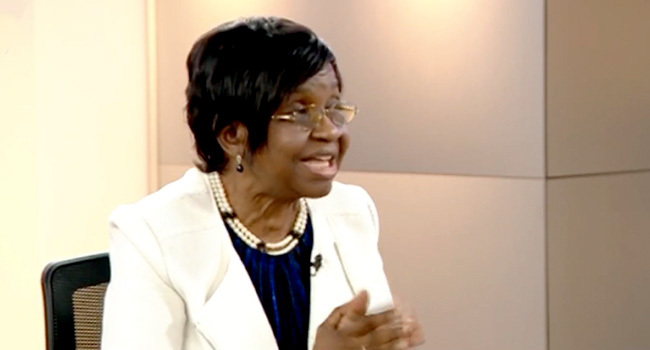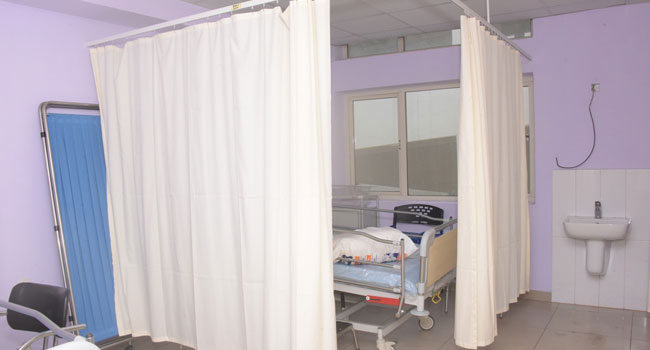A visit to primary health clinics across some local governments in Jigawa State has shown that maternal care suffers as a result of a shortage of manpower, especially midwives.
In some of the facilities, there is a shortage of midwives in many of the Primary Health Centres visited by the reporter in five Local Government Areas.
Garin Gabas primary healthcare centre in Malam Madori LGA and the Kofar Arewa PHC in Hadejia LGA have two midwives each, some other facilities visited have only one midwife. Kalgwai PHC in Auyo LGA has no midwife presently.
In a primary healthcare centre at Gabari Ward in Hadejia LGA, despite having 30 persons working in the facility, only one midwife handles pregnancy-related emergencies.
A middle-aged woman at the facility, Zuwaira Isah, appreciates the care she receives at the facility.
“I come here every Tuesday for antenatal and we always enjoy the attention we get from the midwife in the facility. She advises us to maintain personal hygiene and do exercises.”
However, it was a different story for Sadiya Isah when she gave birth.
“When we came it was very late, they told us we have to knock on her door for her to come and attend to us. Fortunately, she came quickly and attended to me. I remain grateful to her,” she says.
The shortage is a major challenge in providing maternal care at the centre, says the officer-in-charge, Isah Haruna Muhammad.
“We have 21 permanent staff, but all in all we have 30 staff in the hospital. And out of the 30, only five are non-clinical staff. But the problem is we have only one midwife,” he said.
“We really need more midwives, so that we can be able to shift them within 24 hours. If we can get two more, we can perform better in maternal care but now we are just surviving with one.
“Sometimes at night, you can get two or three women in labour at once. So, it has never been easy for our midwife in this hospital. We have three maternity beds so three midwives can work at the same time.”

Three maternity beds mean three midwives can work side by side, but only Abdussalam Fatima Batulu does it.
“The issue we have here is that it is not quite easy for me as the only midwife working here. Sometimes it’s crowded. If we can get another midwife to work together in the hospital, it would be better for managing maternity emergencies,” said Batulu.
“At least, we need two additional midwives or even more because, sometimes, I will have two patients at the same time. So, it’s difficult for me to give them the maximum care they require, but when we are two or more we can easily handle it.”
At the Kofar Arewa PHC in Hadejia, there is obstetric care 24 hours, with two midwives working shifts to cover day and night, Maryam Muhammed who gave birth to a baby boy at the facility said she is satisfied with the way she was treated at the facility.
“At any time, the midwives come and check on us. Even before I came for delivery, at any hour we come, we always meet them at the hospital,” Maryam said.
Hadiza Sani, a midwife at the Kofar Arewa PHC, is paid N60,000 monthly to work shifts with colleagues.
“In a month we can have at least 150 to 160 births and we work day and night. The births are many and we are only two in the facility, although other staff assists us in ensuring smooth delivery, we need more midwives in this facility,” she said.
Musa Ahmad who is in charge of the facility said, at the moment, he has 25 workers working, but he lamented the shortage of midwives due to the number of clients in the hospital.
According to him, the facility receives “not only clients from Gagulmari ward but also clients from [other LGAs of] Malam Madori and some parts of Kirikasamma.
At the Dunari Primary Health Clinic in Malam Madori LGA, the story is similar—the shortage of midwives has made round-the-clock care impossible.
“The only challenge we have in this facility is the shortage of staff. At present, we have only five staff members. Four clinical and one non-clinical. When you are talking about maternal care in this facility, we can say it is going halfway. Because we have only one midwife,” said the officer-in-charge Adamu Muhammad.
“We are supposed to be operating for twenty-four hours every day, but we can’t. The only advantage is that the midwife we have is living close to the hospital, so even at night, the watchman calls her if there is an emergency.”
By Muhammad’s estimation, the hospital would need three midwives.
“Then we can shift them within 24 hours. The most senior among them will work the morning hours, while the two others can switch afternoon and night shifts.”
In Kangire Ward in Birninkudu LGA, the story is not as bleak. The health facility has four midwives who provide maternal services. One of them stays in the facility and she is usually called upon when there is an emergency at night.
Miss Kolo Faith, who lives in a residence provided to her within the vicinity of the hospital, is paid N60,000 monthly, even though she and her colleagues are always on call.
“I applied through the local government when a vacancy was advertised, and I have been working for two years now,” she said.
At Kalgwai Facility in Auyo LGA, there is no midwife to provide the required maternal care, which necessitates women in need of the services to seek an alternative at the local government headquarters.
According to Aliyu Muhammad, a father of two, due to the bad shape in which the accommodation set aside for midwives is in, “any midwife sent to the facility did not stay, and at the moment there is no midwife at the facility to provide care for pregnant women”.
The Ward Development Committee chairman, Alhaji Usman Magaji, also confirmed that the health facility has no midwife to provide the required obstetric services at the facility, but a community health extension worker comes to the facility during the day to provide antenatal care.
“Our problem is that we don’t have a midwife. If at least we can get one to stay here permanently we would appreciate it,” he said.
The MSS and Government’s Effort to Bridge Manpower Gap
To resolve the dearth of staff in the facilities, the state government adopted the Midwives Service Scheme (MSS), a federal government program that began in 2009 and ended in 2015. Since then, the state government has established two more midwifery training schools to bridge the gap in manpower.
The Millennium Development Goal-Debt Relief Gains (MDG-DRG) account is used to fund the MSS, which is managed by the National Primary Health Care Development Agency (NPHCDA).
By hiring and deploying newly qualified, unemployed, and retired midwives and outfitting clinics to provide basic emergency obstetric care, the program addresses the lack of experienced obstetric care providers and the poor access to basic emergency skilled birth attendants.
The Federal Government recruited midwives for the program, and after training them, they are sent to specific PHC clinics in rural areas where they are needed. Midwives who were hired have recently graduated from midwifery schools around Nigeria as well as retired or unemployed midwives.
With remuneration for services rendered within the MSS in addition to any ongoing pension income, retired midwives who were still able to work may have had an added incentive to sign up for the program. The midwives were sent to each MSS PHC facility in groups of four to guarantee that 24-hour obstetric care was available.
Additionally, CHEWs were sought out and sent in pairs to every MSS facility to assist the midwives and take part in community mobilization. The government assisted communities with MSS facilities in establishing community health committees that served as a link between the facility and the neighbourhood.
Each local council chosen to take part in the scheme had four MSS facilities located there. Similar to a hub-and-spoke system, these four facilities were connected to a secondary care facility (a General Hospital) to handle referrals from the MSS facilities.
Jigawa State under the programme got 119 midwives and 65 CHEWs, and the government provided them with monthly allowances of N20,000 and N30,000, respectively, as part of the same service programme until its end.
Jigawa’s response to the end of the MSS was to absorb midwives on its payroll as part of its regular health workforce.
Jigawa is looking to achieve a staffing rate of at least two midwives in each primary health centre, alongside the federal government’s ongoing plans to revitalize 10,000 health facilities.
“At present, we have at least one midwife in all our primary health centres across the state but our target is to have two in each of the facilities so that we can operate for twenty-four hours,” said the Executive Secretary of Jigawa state Primary Health Care Development Agency, Dr Kabir Ibrahim.
“So far, we have 350 midwives and what we require to achieve our target is 560 and very soon we would recruit more. If there is any facility without a midwife, it is because of lack of accommodation and we are working to see we provide good accommodation for them in those places.”
Among the 350, the state ministry of health is responsible for the payment of salaries of 130 midwives, while the local governments are paying the salaries of 119 midwives, noted Kabir
Also, under the Basic Health Care Provision Fund, 75 midwives have been recruited. GAVI Vaccine Alliance is supporting the state with the recruitment of 357 midwives and already 120 have been engaged,” he added.
Deputy Governor of Jigawa State also had this to say: “Umar Namadi “When that programme terminated, we saw the importance of the midwives and the impact they had on maternal care in the state, and the state Governor Badaru Abubakar instructed that they should be retained and the state government continues to pay them their salaries.”
But the state still needs more.
“Unfortunately, or fortunately we have attained the status of one health facility per ward. That means we are supposed to have 287 primary healthcare facilities. However, we have 279 PHCs. This is because some wards are very close to one another, so one PHC can serve two wards in some places,” he said.
“This is a huge number, and you need manpower to manage this. That is why the state government under the leadership of the state government established additional nursing and midwifery school in Hadejia and this is in addition to the one we have in Birninkudu. And also established a school of midwifery in Babura local government area of the state.”
This report is published with support from the International Budget Partnership IBP and the International Centre of Investigative Reporting, ICIR.




